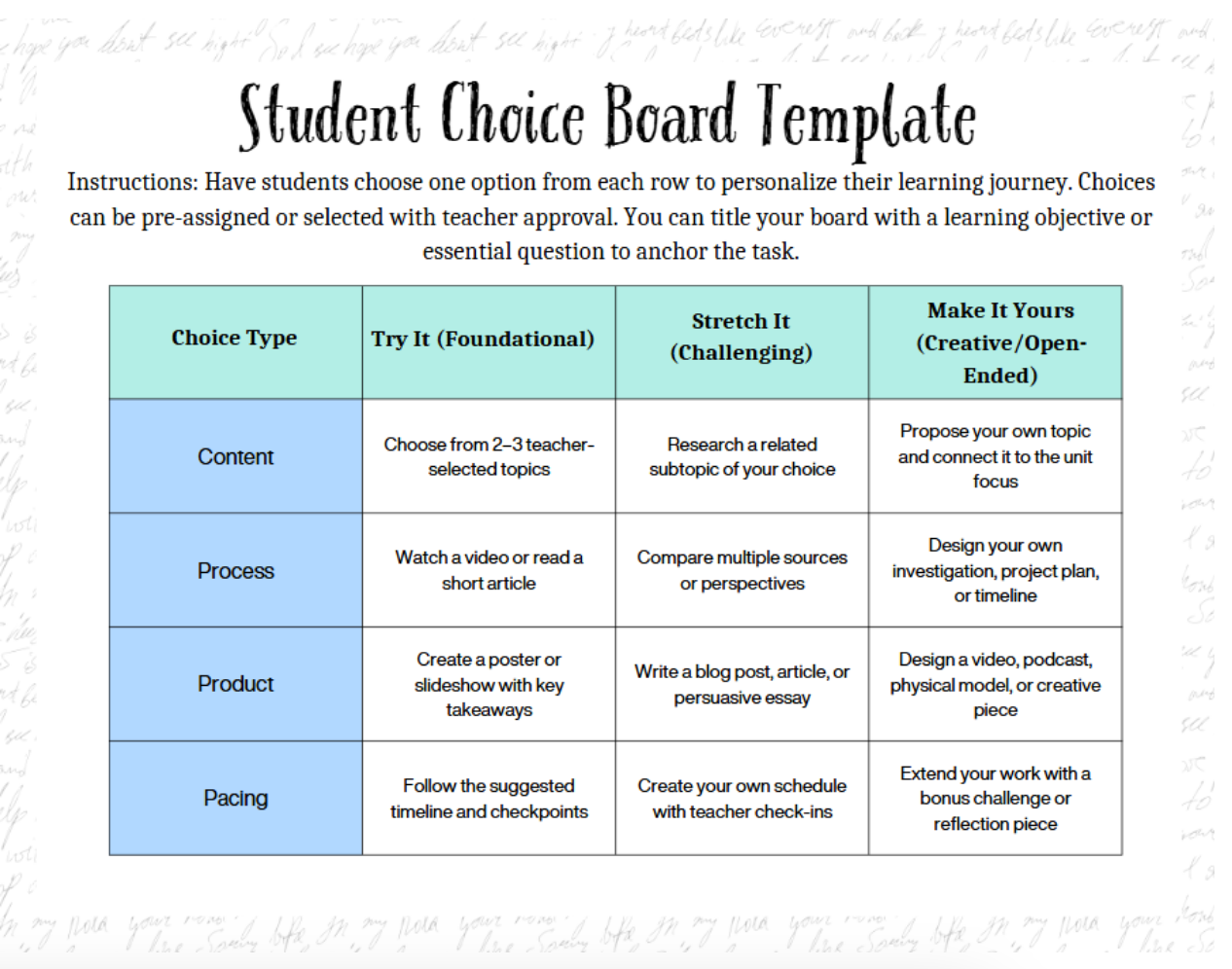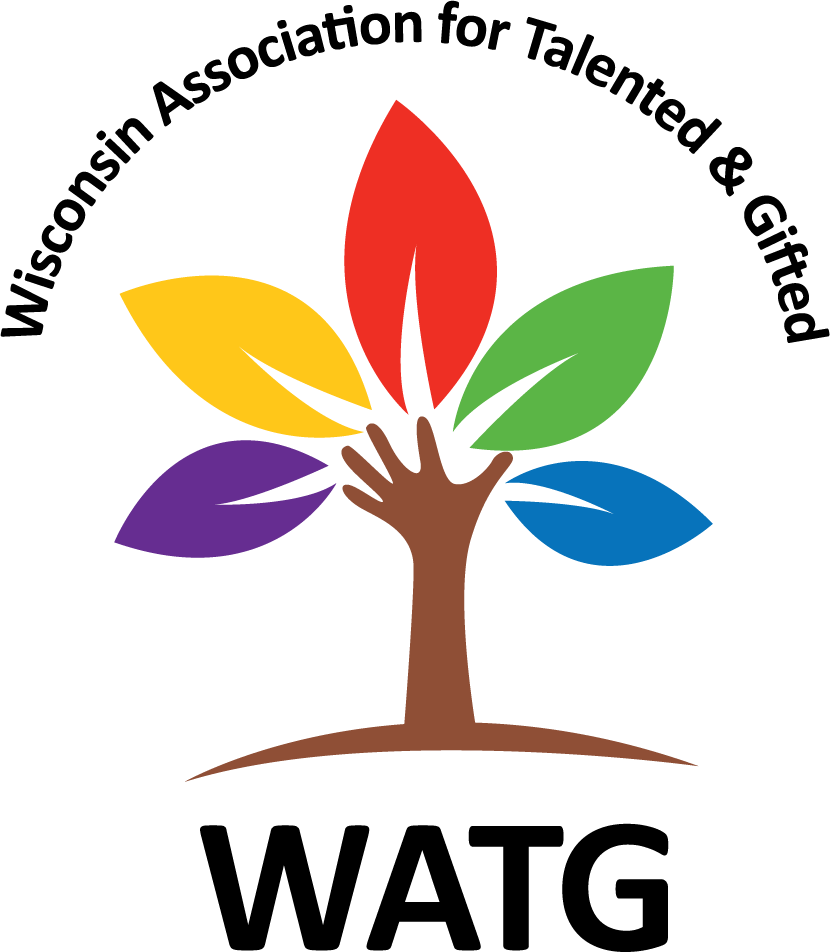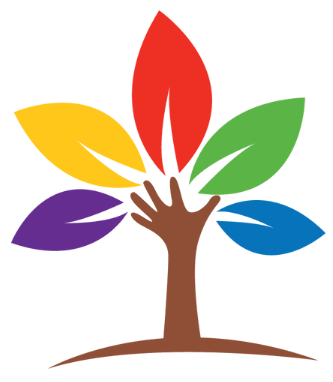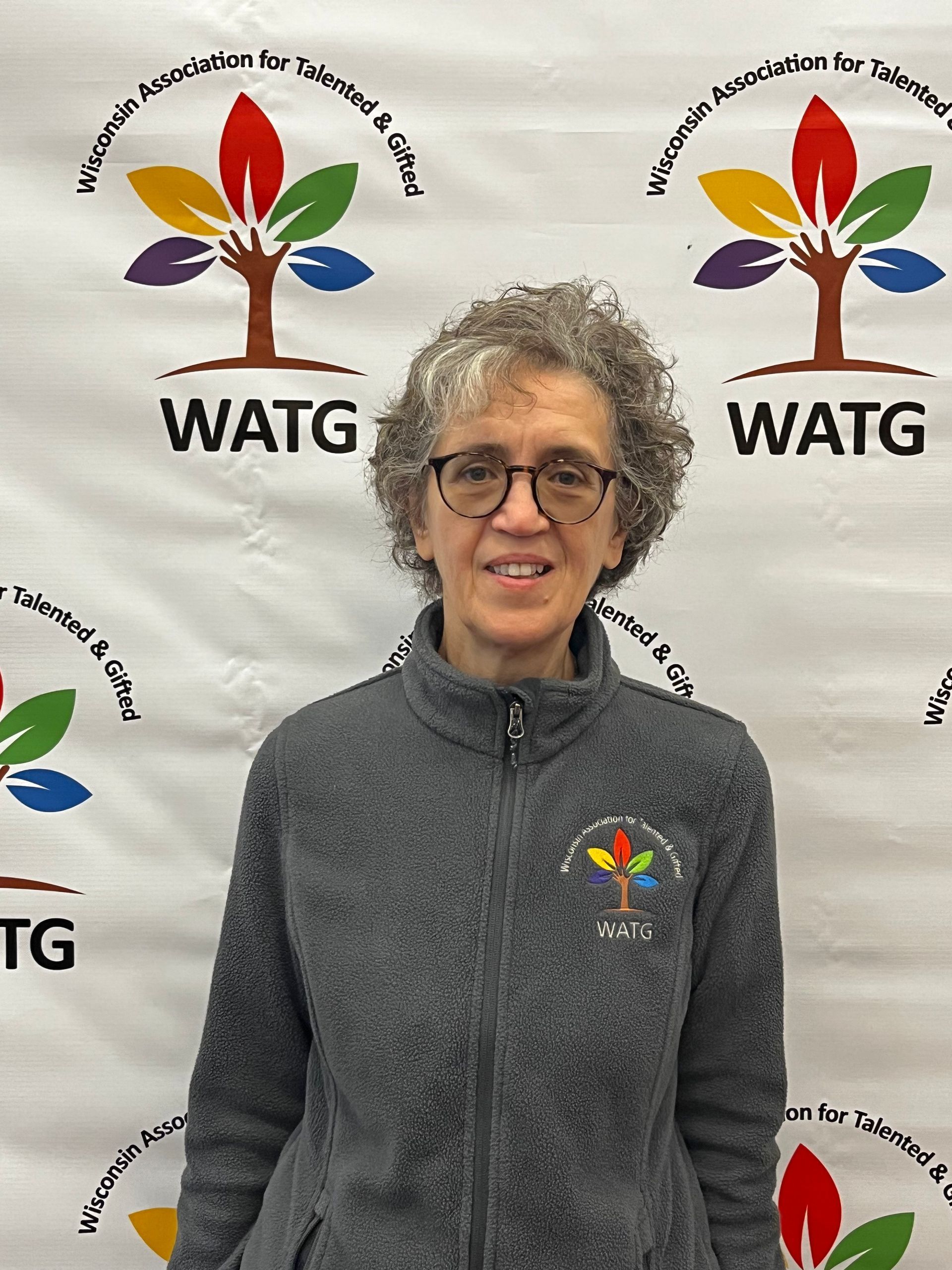Differentiation Through Choice: A Classroom Strategy
While challenge matters, what truly empowers gifted students is the chance to shape their own learning path. When students have a say in what they explore, how they learn, and how they share their thinking, they tend to lean in with more curiosity, confidence, and creativity.
That doesn’t mean giving up structure. Choice is most effective when it’s thoughtfully designed and connected to clear learning goals. With just a few intentional options, you can create space for student voice while still maintaining focus, direction, and balance in your classroom.
When it’s aligned with student interest and readiness, choice can be one of the most effective ways to differentiate instruction—something Heacox and Cash (2013) highlight in their work. It’s not just about giving students more to do; it’s about offering meaningful options that help them connect with the learning. Olszewski-Kubilius and colleagues (2021) add that real talent development isn’t just about what we teach—it’s about helping students grow into thoughtful, motivated learners who know how to take the lead in their own learning. Even small opportunities for autonomy can make a meaningful difference. When students feel like their ideas matter, they’re more willing to take risks, ask better questions, and push beyond the minimum.
The Student Choice Board
A simple, flexible strategy I’ve seen work across many classrooms is the Student Choice Board. It helps students take ownership without overwhelming your planning time. The board is organized around four kinds of choice:
- Content – What students will explore
- Process – How students will learn
- Product – How students will show what they know
- Pacing – How students will manage their time and effort
The choice board is designed to meet students where they are, offering a gradual path toward deeper ownership. Each row includes three levels of engagement. “Try It” options are foundational—these are familiar formats or structured tasks that help students build confidence as they engage with the core learning goals. “Stretch It” encourages students to take things a step further by applying their thinking in more complex or creative ways, often requiring analysis, synthesis, or perspective-taking. Finally, “Make It Yours” gives space for students to design their own learning paths—whether by choosing their own topic, proposing a unique product, or working independently with check-ins. Not only do these tiers offer variety, they also give students the opportunity to make meaningful decisions about their learning—and take ownership of how they demonstrate their understanding.
You can introduce the choice board at the start of a unit to encourage student-driven learning from day one, or bring it in mid-unit to deepen exploration of a concept you've already introduced. It works well for independent projects, early finishers, or as a consistent structure during centers or workshop time. Some teachers use it as a springboard for Genius Hour, while others fold it into enrichment blocks or flexible grouping rotations. You might present the full board up front or introduce it one row at a time—whatever feels manageable for your classroom. The beauty of this tool is its flexibility. Once students understand how it works, it becomes a natural way to differentiate and build ownership, across content areas and grade levels.
How to Use It in Class
Start by identifying your core learning target. Then, adapt the board so the content, process, and product options align with that goal. You might give students one row at a time or let them build a complete learning path by choosing one item from each row. You can support students along the way with quick check-ins, reflection prompts, or rubrics that prioritize depth and thoughtfulness over simply finishing the task.

What It Looks Like in Practice
- In ELA, during a novel study, one student might choose to analyze a character through a digital poster, while another compares the novel’s theme to current events and creates a podcast episode. Both are meeting the learning target—but in ways that play to their interests and strengths.
- In science, students studying ecosystems could choose a biome to investigate, watch related field footage, and build a model, infographic, or presentation based on their findings. Some might stick with a suggested format, while others create their own path.
- In social studies, a unit on civic engagement might include reading articles, examining speeches, or interviewing a community member. Products could range from a persuasive essay to a student-created advocacy campaign or digital timeline.
- In math, the board could help students apply concepts to real-life problems. One might use data to create graphs based on sports stats, another builds a budget for a dream vacation, and someone else develops a tutorial video explaining how they solved a geometry problem.
No matter the subject, choice opens the door for student voice—and that’s often where the most meaningful learning begins.

Here’s a link to an editable Canva template that includes both the sample ELA choice board and a blank version you can customize for your own students.
Click here to view and copy the template in Canva.
You can easily modify the text, layout, or color scheme to match your content area or classroom needs. Just open the link, click “Use this template,” and personalize it.
References
Heacox, D., & Cash, R. M. (2013).
Differentiation for Gifted Learners: Going Beyond the Basics. Free Spirit Publishing.
Olszewski-Kubilius, P., Subotnik, R. F., Worrell, F. C., & Duggan, M. A. (2021).
Talent Development as a Framework for Gifted Education. Routledge.
By Laura Mukerji, WATG Board Member











